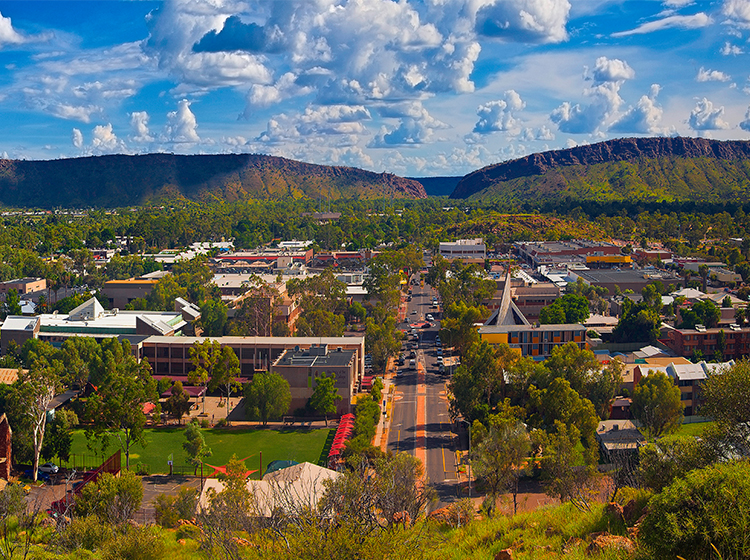Viva Energy’s Geelong Refinery has been manufacturing low aromatic unleaded fuel (LAF) since 2014, in support of Australian Government initiatives to reduce petrol sniffing in regional and remote areas of Australia. We investigate this innovative product and the positive impact it is having on these communities.

What is low aromatic fuel?
Low aromatic fuel (LAF) is a specially designed 91 octane unleaded petrol that complies with the Australian Fuel Quality Standards Act and can be used in all petrol engines that use regular 91 octane fuel. At the same time it has been formulated to contain low levels of the aromatic compounds normally associated with the ‘sweet’ smell we recognise as petrol, in order to deter sniffing.
Dr Mark Tabone, Viva Energy’s Senior Fuels Product Quality Excellence Lead, says that Shell Unleaded 91 Low Aromatic, which is currently produced by the Geelong Refinery, is essentially a higher quality version of regular Unleaded 91 (ULP 91) fuel. It’s indistinguishable in performance and only noticeably different by its lack of ‘petrol’ odour and bright yellow colour.
“LAF complies with all the specifications and regulations for ULP 91, and our customers say they notice no difference in the performance of their vehicles, lawnmowers, chainsaws, boats or motorcycles.
“But it smells different, due to the absence of the aromatic component of regular ULP.”
Regular ULP 91 is a blend of several components, including alkylate, which is a high-octane, clean-burning component, and platformate. Alkylate is a costly component and difficult to make, so it is normally only present in small quantities in the regular unleaded product.
“The difference with LAF is that we don’t use platformate and, consequently, add more alkylate to meet octane requirements. So it’s actually a better quality, cleaner-burning fuel which leaves no deposits in the engine. Due to the Federal Governments petrol sniffing prevention program, LAF costs the same as ULP at the bowser so motorists get a better quality fuel at the same cost. The other advantage over regular ULP 91 is that the engine cleaning additive used in LAF is the same as that used in Shell V Power with all the engine operability benefits that this brings. If you didn’t know you were using LAF then you wouldn’t know the difference,” Mark says.
Viva Energy currently supplies LAF to regions covering 157 retail sites, including Mornington Shire, Weipa, Katherine, Mataranka, Tennant Creek, Halls Creek and Alice Springs, with Mt Isa and others in the pipeline. Viva Energy has recently been re-contracted to supply the northern half of Australia with LAF for another three years.
All 91 octane vehicles, boats and equipment being refueled in those areas are safely and reliably using Shell Unleaded 91 Low Aromatic.
The improvements are already tangible
Viva Energy’s Communications Manager, Edwina Pribyl, says there has been a marked reduction in the occurrence of petrol sniffing in regions using LAF.
“Petrol sniffing impacts all ages – young children, adolescents, grown adults and even older adults,” Edwina says. Unfortunately, it causes physical and mental health problems, brain damage and even death, and it’s decimating entire communities.”
But that’s changing. A study carried out in 2011/12 and 2013/14 by the Menzies School of Health Research found over half of the petrol sniffers surveyed were between the ages of 15 and 24, with some under the age of nine. However, it also found an 87.9 per cent reduction in petrol sniffing between 2005 and 2014 in those communities where the LAF program was rolled out.
“At a conference in Alice Springs a few years ago, I was approached by an elder of a community that had been severely impacted by the devastating effects of petrol sniffing but have now got their people back because of the LAF program,” Edwina says. “He had tears in his eyes as he held our hands and thanked us for the opportunity to save his people.
“It shows what can be done when we all work together – fuel companies, government and the communities.”
An ongoing commitment
“The program is having great results, but it’s crucial to make sure there are other supporting programs in place,” Edwina says. “Keeping people busy, teaching them skills and having them more involved in life is just as important as replacing the fuel, which is why the government is rolling it out gradually.”
It’s also why Viva Energy is investing in projects to help with substance abuse. The company has committed $3 million towards substance abuse prevention programs across the term of the new three-year LAF supply contract.
Viva Energy’s Indigenous Participation Committee researches projects that align with the LAF distribution footprint, working to actively support groups or individuals making a difference in this space, particularly in relation to mental health and substance abuse.
For example, Viva Energy is sponsoring an education program that’s part of The Council for Aboriginal Alcohol Program Services (CAAPS) Volatile Substance Abuse Program. Indigenous youth who attend the 16-week residential CAAPS program will be able to improve their numeracy and literacy skills in order to re-enter daily life.
“We also have smaller grants for once-off requests to support people at the grassroots,” Edwina says. “We were recently able to help a Weipa couple who have recovered from substance abuse and who are now actively supporting others in their community, to attend a conference in Adelaide to tell their story.
“The low aromatic fuel program is an excellent project that we’re all proud to be involved in, from our staff at the Geelong Refinery who are currently producing the fuel right through to our team members working in remote regions to allay concerns and educate people about its benefits.”
Interested in Viva Energy's products?
Find out more here